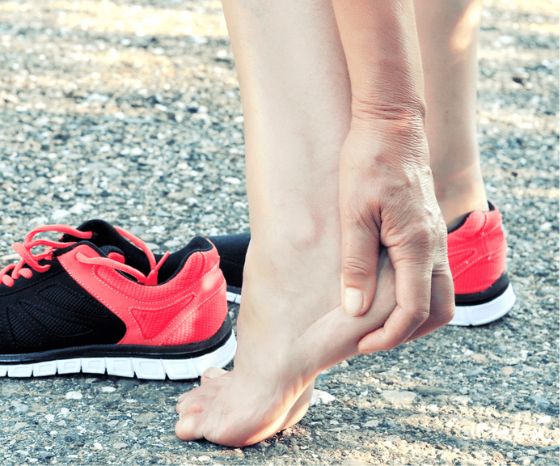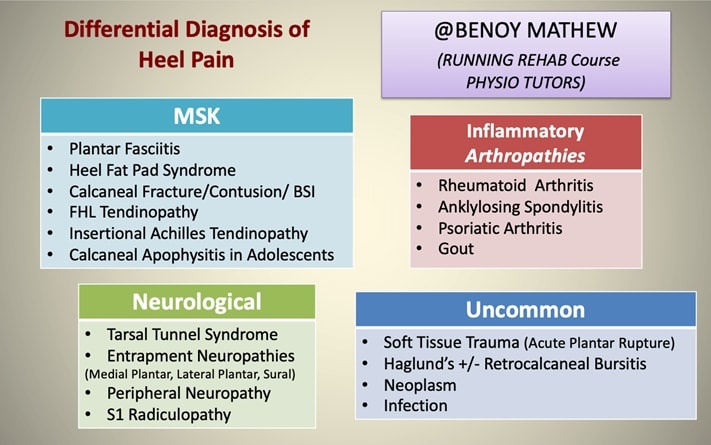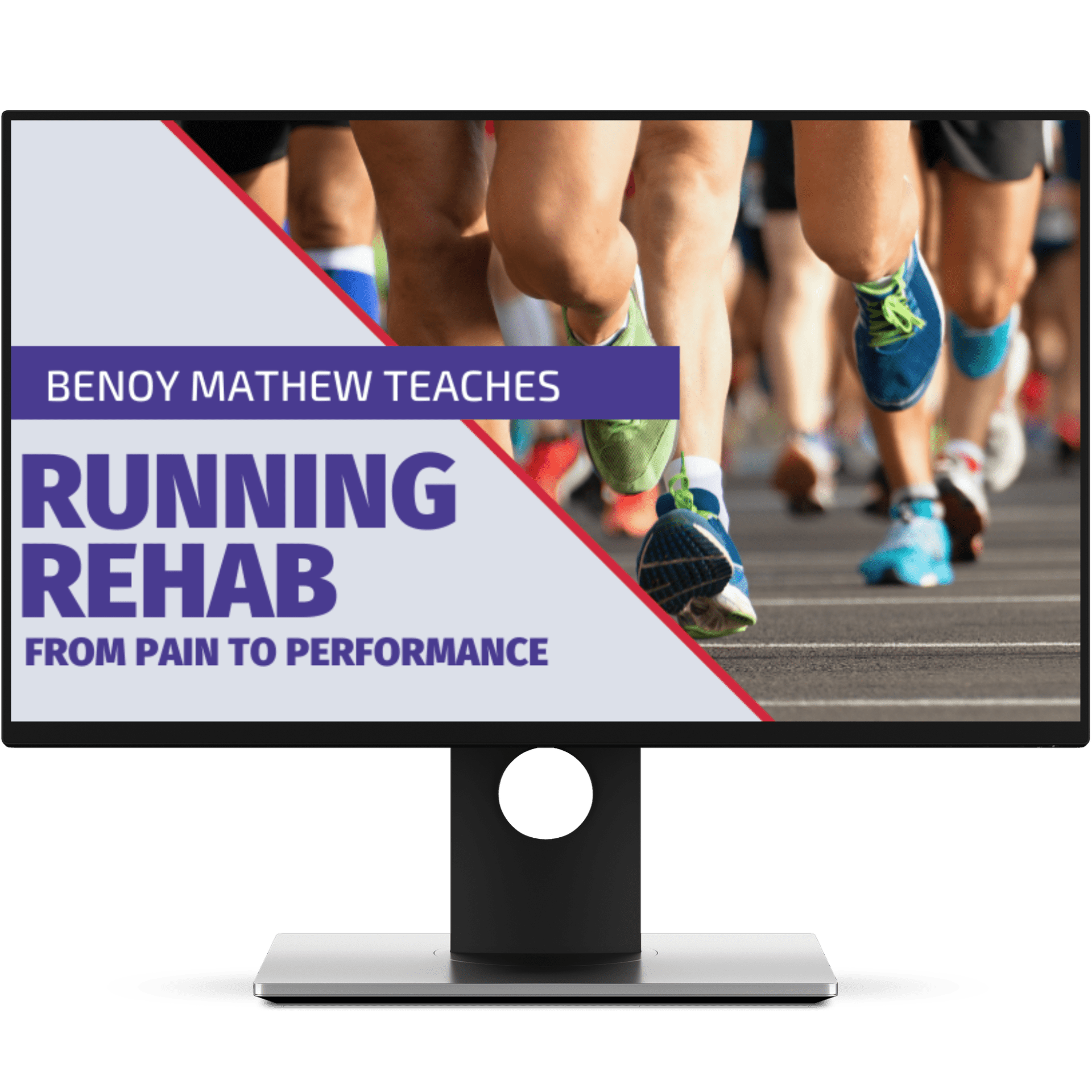Heel Pain in Runners – More than Just Plantar Fasciitis!
Heel Pain in Runners - More than Just Plantar Fasciitis gives therapist new insights into differential diagnosis for heel pain in runners

Heel Pain is a common overuse injury in recreational runners. There are multiple causes of heel pain in runners and the most common cause is plantar fasciitis or plantar fasciopathy. Plantar fasciopathy is an appropriate description since this condition is not inflammatory. Risk factors include limited ankle dorsiflexion, increased body mass index, standing for prolonged periods of time, and a recent increase in training volume or speed in runners. Plantar fasciitis is common in both the athletic population and sedentary people. With appropriate treatment, 80% of patients with plantar fasciitis will improve within 12 months. The peak incidence is between the ages of 40 to 60.
Diagnosis:
The classic signs and symptoms of plantar fasciitis are pain to the medial tubercle at the insertion of the plantar aponeurosis, pain worse upon standing in the morning, and standing after long periods of inactivity. The incidence of Plantar Fasciitis in runners ranges from 4.5 to 10% and represents the third most frequently experience running-related musculoskeletal injury in this systematic review by Lopes et al. (2012).
The high incidence of PF in runners is not surprising, if one considers the role of the plantar fascia and the longitudinal arch, in the force absorption, associated with long-distance running.
Physical Examination:
On palpation, the patient will be tender to palpation on the proximal plantar fascial insertion at the anteromedial calcaneus. The windlass test is a useful test for this condition and is described in the following video:
A positive result is heel pain reproduced by forced dorsiflexion of the toes at the metatarsophalangeal joints with the ankle stabilized. The windlass test has a specificity of 100% and a sensitivity of 32% as shown by De Garceau et al. (2003).
Differential Diagnosis:

There are multiple causes of chronic heel pain in runners and it is important to be aware of other pathologies in this area, as outlined in the picture below:
Key Differential diagnoses in the running population, include fat pad contusion in the heel, calcaneal fracture, and retrocalcaneal bursitis. Calcaneal fractures may present with localized tenderness and usually occurs after trauma or a spike in training volume or speed. Retrocalcaneal bursitis presents with insertional Achilles tendon discomfort and is located in a more posterior position. In the following 5-minute video, I will go more in-depth about the differential diagnosis:
Conclusion:
In the case of uncertain diagnosis or when a patient presents with persistent heel pain, for more than 3 months or if symptoms are worsening, diagnostic imaging is recommended to confirm the diagnosis and to rule out other differentials. As a therapist dealing with runners, it is important to be aware of the multiple causes of heel pain and key differential diagnosis, other than plantar fasciitis.
RUNNING REHAB: FROM PAIN TO PERFORMANCE
Running Expert Benoy Mathew Reveals His 5 Step Formula to Become a Running Rehab Specialist!

This blog article is taken from our Running Rehab – From Pain to Performance Online Course. To learn more about the management of running-related foot and ankle injuries, including plantar fasciitis, check our comprehensive online Running Rehab Course with access to all information on initial assessment to management of all running injuries.
If you would like to watch another free webinar about hip pain in runners, feel free to sign up below!
Thanks a lot for reading!
Benoy Mathew,
Lower Limb Specialist Physio
Creator (Running Rehab Course)
References:

Benoy Mathew
MSc MAACP MCSP HPC Registered
NEW BLOG ARTICLES IN YOUR INBOX
Subscribe now and receive a notification once the latest blog article is published.







